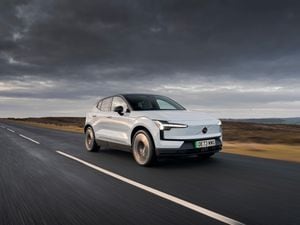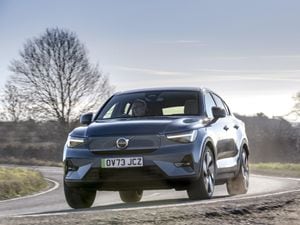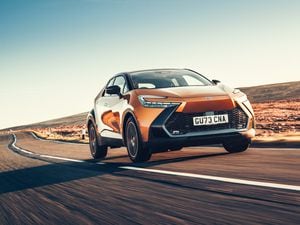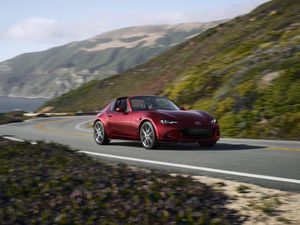First Drive: Nissan’s Juke makes a stellar comeback
Nissan’s popular Juke crossover is back for a second generation — but can it be as popular as the first? Ryan Hirons gets behind the wheel…
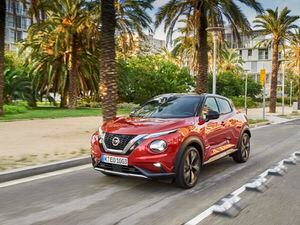
What is it?
There’s that old cliché surrounding a difficult second album. If your first is a colossal hit, there are big shoes to fill when it comes to that follow-up.
What once may have been a revolutionary new approach may now be the norm or even old news when the time comes for that sequel, with the world moving on and tastes changing. It’s possible to overcome, of course. Take a look at Nirvana’s Nevermind for example — the band’s successor to its incredible Bleach — becoming their most-renown record.
Which brings us to the new Nissan Juke — the follow-up to the car that started off the now-booming crossover segment. Once in a class of its own, the market is now flooded with contenders — but can the new Juke still rise to the top? We find out…

What’s new?
Nissan had the mega first hit on its hands with the original Juke — selling over 1.5 million of them from its 2010 introduction to it just coming off the forecourts. With that in mind, it’s no surprise to see its evolution rather than revolution here.
The most obvious case of that is in the new Juke’s design. Though it takes on a bit more of a modern and grown-up look than before, it still has the iconic separate headlamps that give it a distinctive beady-eyed look, while the overall silhouette is retained too.
A new chassis is said to improve drivability, though probably more appealing to buyers is the fact it increases boot and cabin space on the old car too — though we’ll come to that.
What’s under the bonnet?
At its launch, Nissan is offering just one engine option for the new Juke. It’s a 1.0-litre, turbocharged petrol unit producing 115bhp and 180Nm (up to 200Nm in its self-controlled ‘over boost’ mode), with power sent to the front wheels through either a six-speed manual gearbox or seven-speed dual-clutch automatic.
It’s the former configuration we’re driving here, resulting in a 0-60mph time of 10.2 seconds with a 112mph top speed possible. As for efficiency, Nissan claims it will return up to 47.9mpg in mixed driving conditions with CO2 emissions weighing in at 112-118g/km.
Faults with the setup are pretty minimal. Power delivery is adequate, and torque comes in pretty smoothly across the rev range, though it’s certainly no performance car and those wanting a bit more grunt should hold out for the probability of a more powerful engine down the line.

What’s it like to drive?
Nissan claims the Juke is more fun to drive than its predecessor, but don’t be fooled into thinking this is some bonafide sports machine. This is still a car best at home in the city centre.
Steering is lightly-weighted which is great for navigating around tight streets, parking easily and generally not being irritating to live with on a daily basis. For most buyers, this is probably enough — though those coming into this with an engaging drive might want to look elsewhere.
There’s a feeling of disconnect between the road and car when pressing on, so tearing up a back road isn’t really a possibility here. It’s not perfect on a motorway either with a bouncy ride and notable wind noise compromising on refinement, though it’s livable for shorter trips.

How does it look?
If there’s one thing the original Nissan Juke is known for, it’s how polarizing its design is. With that in mind, it would have been easy for the firm to take a safer route with the aesthetic and go for a more conventional look.
Instead, though, it’s opted to evolve the opinion-dividing visual. It’s immediately recognizable as a Juke thanks to its large, low-set headlights and thin daytime runners up to — though these now flank Nissan’s corporate v-styled grille. At the back, the boomerang-esque lights have been swapped out for more conventional, boxy units to bring it in line with the rest of its model range — though we think this is no bad thing.
Though it does retain the general Juke look, the more modern take is less offensive than its predecessor. The result is less likely to split opinion, though we’re leaning on the side of good.

What’s it like inside?
One of the biggest changes to the new-generation Nissan Juke comes in its size, with growth in length, width and height. This naturally leads to more room in the cabin, with its improved space immediately apparent.
Both driver and passenger will find it to be more spacious than before, which is something that definitely needed to be improved upon, while those in the back will be that bit comfier too. Getting three full-sized adults in the back is still going to be a struggle, but for a small family car, it does the trick.
Materials throughout the cabin are improved upon too, with faux leather trimmings working to give a more premium feel to the car. Hard scratchy plastics are still to be found, but they’re certainly less apparent before and crucially compared with most rivals.
As for boot space, the new Juke offers 422 litres, a hefty increase of over its predecessor’s 354 litres.

What’s the spec like?
Pricing for the new Nissan Juke kicks off at £17,395, securing a Visia model. Kit thrown in as standard includes 16-inch steel wheels, LED headlights and a comprehensive safety package including autonomous emergency braking, cruise control, high beam assist, hill start assist and lane keep assistance.
We’re behind the wheel of the Juke in high-spec Tekna+ form, which is available from £25,295. Additional extras here include 19-inch alloy wheels, an eight-inch touchscreen infotainment system with Android Auto and Apple CarPlay support, a Bose sound system (including headrest-integrated speakers on both front seats) as well as Nissan’s suite of ProPilot semi-autonomous technology.

Verdict
Nissan has done pretty well with this second album of the Juke, though its existence in a market of many rather than one means this may not be quite the mega-hit of its forefather.
It’s still likely to sell in droves though — particularly with Juke aficionados current. The car is better in all areas than its predecessor, crucially on space, and it squares up well to newer rivals. Those wanting something of a connection between car and road in their compact crossover will have to look elsewhere, but this is a car that’s bound for the city and it ticks the urban boxes well.

